Junkie XL Interview – Geeking out with the XL Gear Junkie
Tom Holkenborg, aka Junkie XL, is a multi-platinum-selling producer and remixer who also happens to be one of Hollywood’s most in-demand film composers, having scored films including Mad Max: Fury Road, The Dark Tower and the latest reboot of Tomb Raider. Andy Jones meets a man who likes to get Eurorack geeky, even on his […]
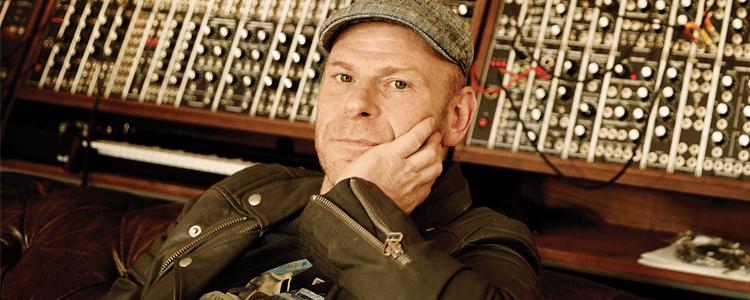
Tom Holkenborg, aka Junkie XL, is a multi-platinum-selling producer and remixer who also happens to be one of Hollywood’s most in-demand film composers, having scored films including Mad Max: Fury Road, The Dark Tower and the latest reboot of Tomb Raider. Andy Jones meets a man who likes to get Eurorack geeky, even on his days off…
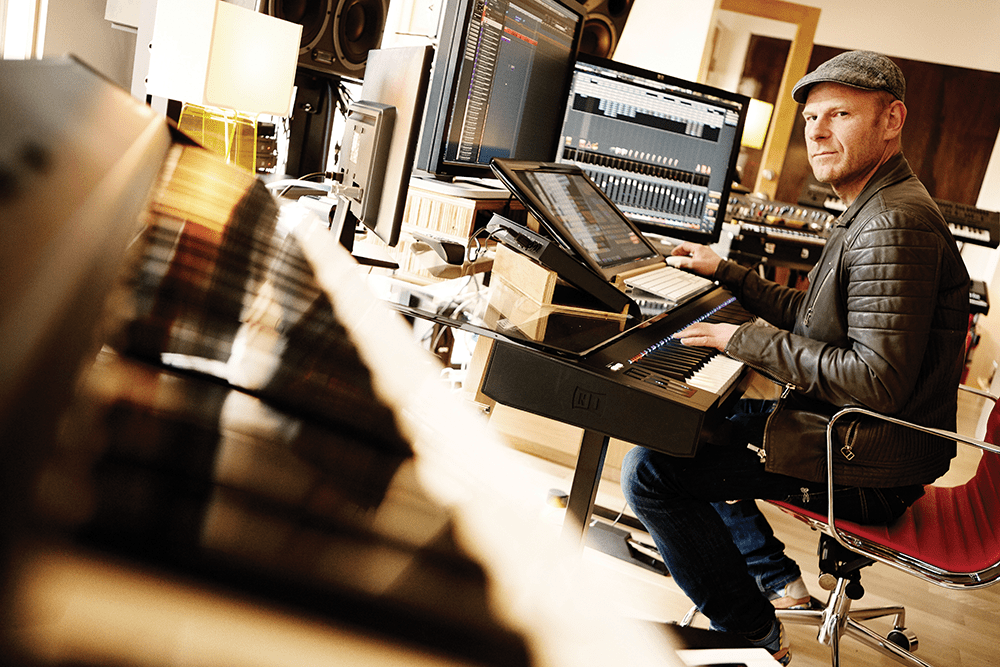
As you’ll read over the next few pages, Tom Holkenborg, aka Junkie XL, has quite the studio. This comes from ‘35 years of gear hoarding’, during which time Tom has gone from playing in metal bands to being one of the most successful producers on the planet, to now being one of the elite movie-soundtrack composers in Hollywood.
A lot of success in these arenas has brought with it a lot of new and classic gear for Tom: a self-confessed gear junkie, if you’ll excuse the play-on-name. Indeed, as we meet – albeit virtually by Skype – he is sat in front of a vast modular system and he reveals that, even at weekends, he is at the patch bay.
“Every Sunday is a ‘Modular Sunday’.” Tom says. “I get out of bed, I make myself a cup of coffee and start wiring up cables and that’s all I do all day. I record everything continuously into my sequencer and on Monday, thank god, my assistants come in and one of them will take that audio file and chop it down to thousands of different pieces and categorise each one in folders for future use.
“I am constantly saying to aspiring composers and musicians that the only people who really do ‘get it’ are people working in the electronic-music scene who are constantly looking for new sounds and putting them in folders for future use. When you have time, you work on your library, and when you don’t have time, you fall back on all of the stuff that you were doing when you did have time!”
Even though the time spent at his modular is an investment for the future, Tom doesn’t see it as working at all…
“It is a day off to me, but I guess technically, I’ve been on holiday for the last 16 years,” he laughs. “I do what I love and every morning, I sit outside, have a coffee in the sun and say ‘man what a life’, you know? I do what I love and I can pay the bills. It’s great fortune, really.”
Modular Mania
Tom is talking about his time in L.A., during which he has gone from producing video game and commercial soundtracks to the scores for films like Mad Max: Fury Road and Deadpool. His Modular Sundays have regularly contributed to such blockbusters.
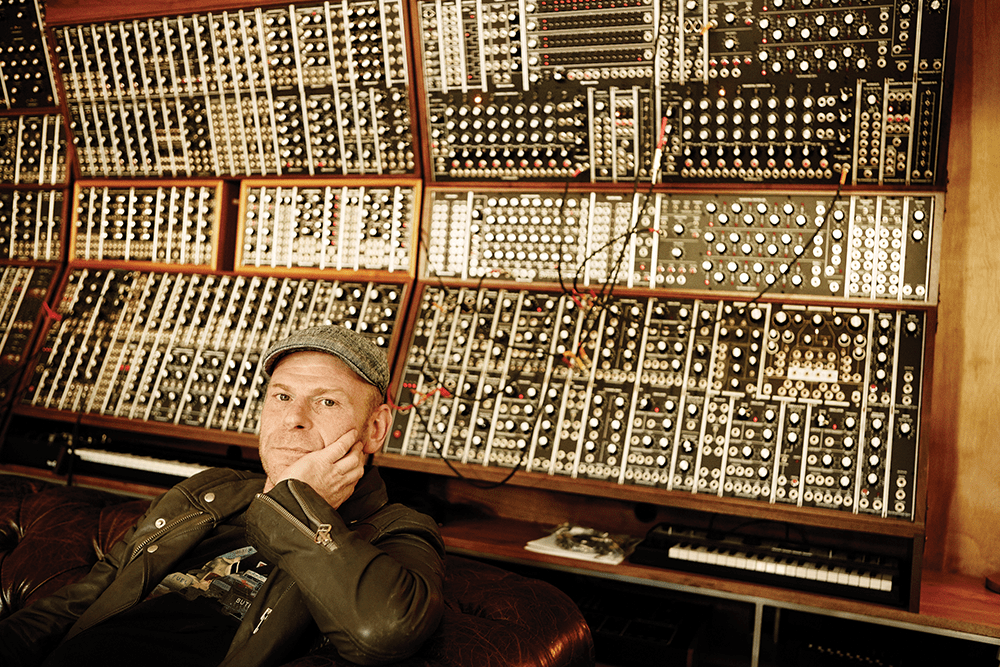
“I use the modular constantly and it was used on The Dark Tower,” he reveals. “Every Modular Sunday, something comes out that will be useful in future projects. I also have friends in town and we’ll organise maybe a Friday night and someone will bring snacks around and we fuck around [with the modulars]. I also did it a lot with Hans when I was working with him. We’d spend some nights just doing that. Even if you don’t use the results, it is so much fun.”
That ‘Hans’ is a certain Hans Zimmer, the most successful Hollywood composer of our time and one of Tom’s closest friends. Before he got into film soundtracks, Tom was a successful global producer, responsible for the huge Elvis remix A Little Less Conversation and also produced five studio albums of his own material. He initially moved to L.A. to produce music for adverts and video games, as he explains.
“When I started producing music for games in the 90s, my electronic-music-producer colleagues said to me: ‘You can’t make music for a commercial or for a videogame, it’s a sell out’. And I said: ‘No, videogames are the new radio’. Just a few months later, Napster started and CD sales were gone! So, for me videogames were a way for me to reach people in Russia or Asia and because I did so many games in the late 90s and early 2000s, my artist profile in America went up drastically, because these kids discovered my music from the videogames and then found out that I was actually a touring artist.”
From games to film
After moving out to L.A., Tom discovered that networking was key to having any success in the ‘jungle’ that is the movie production industry.
“The film business is incredibly hard,” he says. “At a certain point, I started assisting other composers to see how they worked and to get to know people in this industry, networking, showing up at parties, things like that.
“Finally, I met Hans Zimmer and he saw the talent that I had and took me under his wing for two years. That was the last thing that I really needed to learn about film scoring. By then, I’d met a few people through the films that he was working on and somebody offered me work on 300: Rise Of An Empire. That was my first full feature.”
Tom and Hans collaborated on Christopher Nolan’s The Dark Knight Rises and Inception before Holkenborg branched out on his own to score Deadpool and Mad Max: Fury Road, before rejoining Zimmer for 2016’s Batman v Superman: Dawn Of Justice.
“We had met each other a few times before in 2005 and 2007,” Tom recalls. “We always liked each other and he liked the electronic music that I did and I had a massive respect for the films that he’d done. We just used to meet up and have coffee and then one time, he rang up and said: ‘I’ve got this thing, do you want to work on it?’, so I did and that started off the relationship and we’ve become really good friends. He’s such a gear nerd. I can send him a picture of a synth and within two minutes, I get a response back with another picture, even at 2AM! It’s great to have a friend like that.”
Tom explains that his success at scoring movies is partly down to his fresh and varied approach…
“People are looking for that, I think. I’m not 100% an electronic music guy and I’m not 100% an orchestral guy. Usually, my film scores are a bit left of centre and not conventional. I do a lot of sound design for music that a lot of directors like. If necessary, it can be extremely aggressive, which doesn’t always exist in film scoring.
“It was a major draw on movies like Mad Max, Deadpool and Batman v Superman; that extreme, over-the-top aggression. And then, on the other hand, people know that I have a softer side and can write extremely melodic and harmonic material. I have done that for films like Black Mass, a thriller with Johnny Depp, and a few more recent alternative films.”
Full of ideas
It also helps that Tom can make helpful and constructive suggestions to directors.
“My approach is a big draw for directors,” he explains. “They want to hear that the story they are telling in the film is also being told through the music in an exciting way. I have been fortunate that the directors I have worked with can really embrace an outlandish idea. Somebody like George Miller on Mad Max, for example. He has worked with the best classical film composers that we know – Jerry Goldsmith, John Williams, Maurice Jarre. And then we get to Mad Max and I have this idea: ’Let’s record a thousand drummers and a bunch of metal guitars and make it sound so loud that people want to leave the theatres because their ears are burning’. It was amazing for him to embrace that idea.
“You have to have that relationship with the director. You have to be open to suggestions, but also come up with ideas that will make the director forget whatever thoughts that they had in the first place, so they’re like: ’Wow! That’s what we really want!’”
Getting a role
With all of his ideas – both leftfield and conventional – Tom is at a point where directors approach him, but there is no one way that a film project might start.
“It’s a mish-mash of so may different factors. The more I work in this industry, the more I’m still surprised,” he says. “The standard approach is your agent calls a studio and says: ‘What’s happening with that movie? Can Tom talk to the director?’
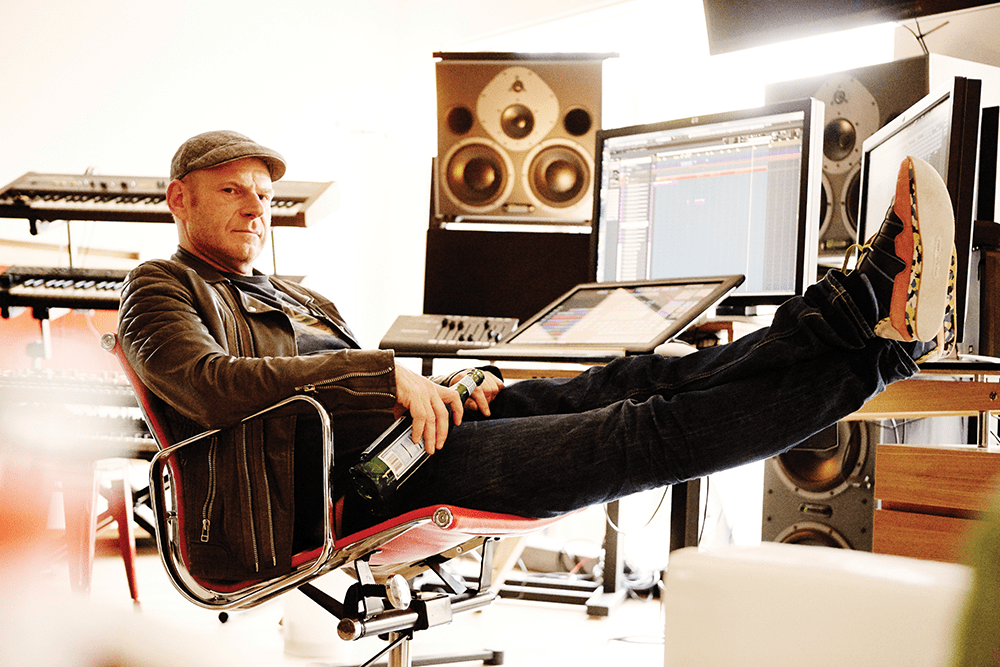
“Sometimes, though, I get an email from a director I don’t know, but he might be friends with a director that I’ve worked with, or it might be that you have a drink on a Friday night in town and you run into a producer and he comes up to you and says: ‘Hey, aren’t you Tom? We have a movie in development, it’s low budget, but might you be interested?’.
“And you take that job and next time around, he’s working on something like Deadpool… There are so many different ways that you get a job – there is no one, single way – and that is why it’s so difficult for young composers to come to town and make any sense of the jungle that is out there.”
In demand
Tom has a team of three assistants to help him with his many and varied projects. As he explains, this is a typical setup for a Hollywood composer.
“Let me tell you this,” he says. “The idea that a film composer can do a score on his own is a mirage; it’s impossible. Because we have computers now, and because a director can literally cut the film a night before the premiere and because everything is digital – it’s not like the old-school film rolls that were printed and sent off to the theatres – the process has completely changed and that means everything is open until the day of release, including the music.
“So the requests that you get from the studio or the director are sometimes so outlandish that it’s impossible to deal with that on your own,” Tom continues. “In the early days, yeah, you could sit behind a piano for six months writing themes and playing it to the director and eventually you’d record it. Now sometimes you’re talking about five weeks to complete a score, but with bizarre requests on top, so I have three assistants – it’s impossible to do it on your own.”
Tom is now in the top 10 most in-demand composers in Hollywood, but is well aware that trends in the business could change that.
“Fashion is constantly changing, like now classical scoring seems to be coming back and there is a return of the old-school guys, but in two or three years, everyone might want a rock score, so other guys may come to the front.”
Even though the style, delivery method and audience for Tom’s music has changed, there is one constant.
“I mostly do film scores now, but one thing that has not changed over the last 30 years or so is that I am still a musician,” he says. “That’s what you see with all this stuff in the studio. I need something in my hands, whether it’s a synthesiser, a guitar or a bass. I cannot sit behind a computer all day, I need to be doing stuff and that hasn’t changed.
“The medium has changed, though. Whereas 10 years ago, the music would be on CD and I would go out and tour it, now the music is for a film. But in my heart, I feel the same. I get up in the morning and I’m like ’I can make music all day, what a beautiful day!’.”
“Honestly, now I can see, looking back, that I always needed to be a film composer,” he adds, “but I wouldn’t be the composer I am today if I didn’t have that history of being an assistant engineer in the studio, a producer, or playing in bands in the 80s. It’s a bizarre history, but you are what you are with all that musical luggage that you pick up. I’m a so-called musical hoarder, because of all this shit I’ve been collecting over the last 35 years.
“It’s here in my studio and I benefit from it and the knowledge I have benefits the film scores I do. Deadpool needed to be cheesy and 80s, but with a modern twist. I knew what to do, as I made that terrible music when it was actually happening! Another composer might need to dive into that and hire people who can help them create something. And with Mad Max, I was able to do everything on my own: play the guitars, play the bass and the drums because I play all of those instruments and I lived through that musical style, too, back in the 90s.”
Flexible approach
You might assume that Tom uses the industry standard Pro Tools as his key DAW, but actually, he’s a Cubase user, although that may change at any time as he has a very refreshing approach to using that central component of studio technology.
“Pro Tools is there, but I barely use it,” he says. “I’ve worked with every DAW, like everything that was released since the mid 80s onwards: Pro 24, Notator, Digital Performer, Ableton Live, Pro Tools – I’ve worked with all that stuff. Every two years, I look at what is out there, all the software programs and I decide what program is best for me at that specific point in time.
“So, maybe back then, I thought that Logic was ahead of Cubase, that Pro Tools was the best sounding, but things have changed a lot and now my main DAW is Cubase. The sound is ridiculously good, the workflow is unbelievable and I think that it is the market leader at this point, especially when it comes to what I need for film scoring. The way you can customise it, it is really well put together.
“But if Pro Tools comes out with an update in two years that blows Cubase out of the water, then I’ll be like ‘Okay guys’. I’m not ruling anything out. People are so precious about what computer they work on, but I don’t care. I always used to work on a Mac and now everything is PC, because Cubase works so much better on a PC. There are so many people, I’m sure you see them too, like Logic users who are Cubase haters and Cubase users who are Logic haters, and then there Mac versus PC. I never got that. You have to pick whatever works best for you.”
Keeping it simple
You may assume that Tom runs a complicated setup. But, he says, it’s actually quite straightforward.
“It’s a large setup, but very simple at its core. I have a 16-quad, 2.8GHz computer, something like that. It’s hooked up to six servers via ethernet and through this program called Vienna Ensemble Pro. Every server is basically a satellite VST host for plug-ins and it all comes back into Cubase via Ethernet, so there is no interface needed. In fact, I only use one interface which is the Universal Audio Apollo, which also gives you the benefit of running the extra plug-ins in Cubase with the processing done in the hardware of the soundcard.
“In the studio it gets complicated, with sub mixers and patch panels to get all of these synthesisers and other gear in Cubase to monitor, but that is besides the point as the core setup is very simple. There’s a video in the second series of my YouTube series, which explains how it is in more detail.”
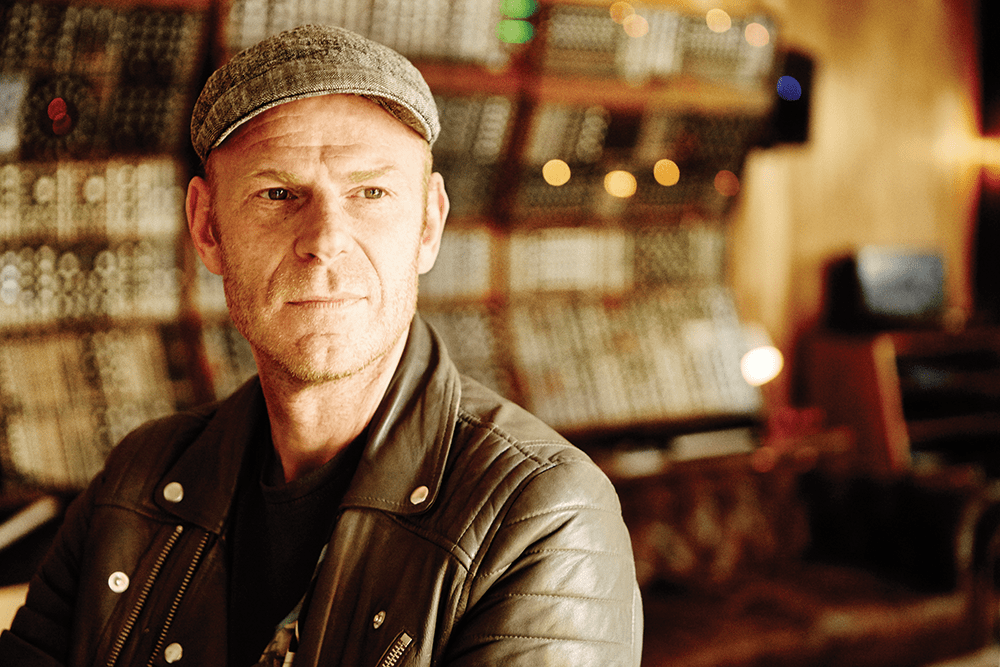
Tom is also a lover of some more unusual pieces of software popular in the world of sound design, including the underrated MetaSynth: a title he’s been using since we last interviewed him more than a decade ago.
“Yes, I still use it and it is one of the secret pleasures of sound design,” he tells us. “What you can do in MetaSynth is cross FFT analysis of two different source samples. It’s like vocoding, but with 2-4,000 bands – it gets really interesting and it’s still phenomenal. As well as that, I bought a computer system called Kyma which runs with hardware called Capybara. They have some new hardware coming out right now and that system will actually do it all in real time.”
Finally, what does Tom think about technology causing the strange situation where so many more people are making their own (release quality) music, but there are fewer filters to make it easily consumable?
“I completely agree with that,” he says. “The days are long gone when you go to your local record store and chat with the guy behind the counter and ask him: ‘What’s good?’ and he would say: ‘Well, you’ve got to listen to this or that’. He was like the human version of ’If you like this then you will also like this’ on Amazon, you know?
“But we do have digital versions of this and if you follow certain blogging sites, they will quite often feed you new music and there are also some great radio stations that filter the crap out. That is how you should see it, that there are fresh ways to put your music out there in the world. There is talent being discovered that you would never have heard about before and I think that is remarkable. There is more digging required, but that is one of the beautiful things about the time that we are living in.”
Tom’s latest film project was the soundtrack to Tomb Raider and you can check out his second series of studio videos on YouTube. Check out part 1 below: